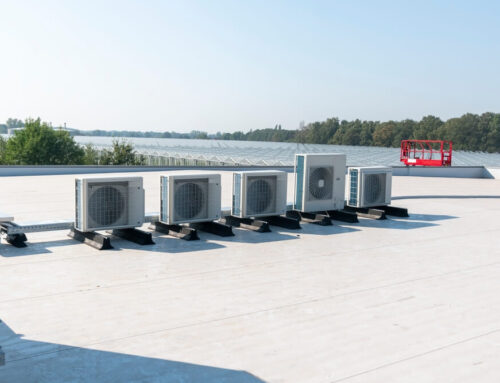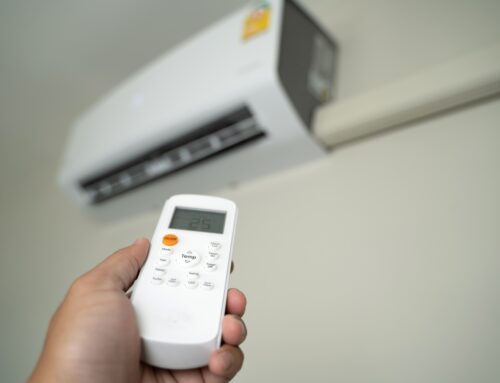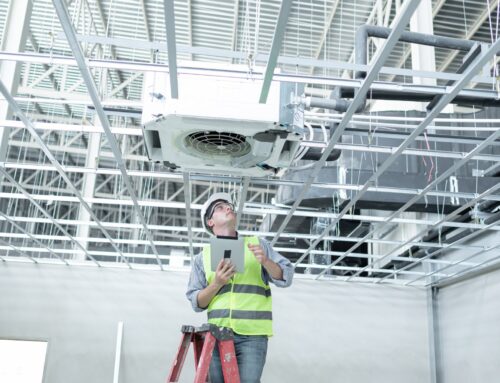When it comes to HVAC systems, one term you will often encounter is ‘SEER rating’. But what exactly does this mean? SEER, or Seasonal Energy Efficiency Ratio, is a measure that indicates the energy efficiency of air conditioning and heat pump cooling systems. It’s a crucial concept for homeowners and commercial property managers alike, as it directly impacts the energy consumption and operating costs of these systems.
Understanding SEER ratings is akin to comprehending the fuel efficiency of a car. Just as miles per gallon provide a measure of how far a car can travel on a single unit of fuel, the SEER rating gives an estimate of the cooling output during a typical cooling-season divided by the total electric energy input.
The higher the SEER rating, the more energy-efficient the system is, leading to lower energy bills and a smaller carbon footprint. All this information and more is accessible to clients who choose Chills Air Conditioning as their AC service provider.
SEER ratings play a pivotal role in determining the energy efficiency of HVAC systems. They are a key factor to consider when purchasing a new air conditioner or heat pump, as they can significantly influence the long-term operating costs of these systems. A high SEER rating not only ensures optimal energy efficiency but also contributes to a more sustainable and environmentally friendly operation.
So, let’s delve deeper into the world of SEER ratings and their importance in our everyday lives.
Deep Dive into SEER Ratings
Comprehensive Explanation of How SEER Ratings are Calculated
SEER ratings are calculated by dividing the cooling output of an air conditioner over a typical cooling season by the total electric energy it consumes during that time. This “SEER rating explained” approach provides a clear picture of the energy efficiency of the system. The higher the SEER rating, the more efficient the system is. This understanding of HVAC efficiency is crucial for making informed decisions about HVAC system purchases and upgrades.
It is important to note that SEER ratings are a maximum efficiency rating, similar to the miles per gallon for a car. Your system will operate at this level of efficiency only under optimal conditions. Real-world conditions can significantly impact the actual efficiency of your system.
Influence of SEER Ratings on the Operation and Optimization of HVAC Systems
SEER ratings have a significant influence on the operation and optimization of HVAC systems. A system with a high SEER rating operates more efficiently, consuming less energy to provide the same amount of cooling as a system with a lower SEER rating. This HVAC SEER rating is a key factor in the overall performance and cost-effectiveness of your HVAC system.
Understanding the importance of SEER ratings can lead to substantial cost savings over the life of the system. For example, upgrading from a system with a SEER rating of 9 to one with a rating of 13 could reduce your energy consumption by about 30%. This translates into significant savings on your energy bills.
Furthermore, systems with high SEER ratings often qualify for Energy Star ratings, indicating that they meet or exceed federal guidelines for energy efficiency. This can make them eligible for rebates and incentives, providing additional cost savings.
When comparing different HVAC systems, the SEER rating comparison can provide valuable insights into their relative energy efficiency. However, it’s also important to consider other factors, such as the system’s size and your local climate, as these can also impact the system’s actual efficiency.
By understanding SEER and EER (Energy Efficiency Ratio), you can make more informed decisions about your HVAC system. While SEER measures the system’s efficiency over a typical cooling season, EER measures its efficiency at a specific outdoor temperature. Both of these ratings provide valuable information about the system’s energy efficiency and can help guide your purchasing decisions.
The Correlation Between SEER Ratings and Energy Efficiency
Detailed Analysis of How High SEER Ratings Contribute to Energy Savings
High SEER ratings are directly linked to energy savings. The higher the SEER rating, the less energy the system uses to cool your home or business. This understanding of HVAC efficiency is crucial for anyone looking to reduce their energy consumption and lower their utility bills.
For instance, an air conditioner with a SEER rating of 16 is 60% more efficient than a similar unit with a SEER rating of 10. This means that for every dollar spent on cooling with the lower-rated unit, the higher-rated unit could achieve the same cooling for just 60 cents.
Over time, these savings can be substantial, making the initial investment in a high-SEER unit worthwhile.
It is also worth noting that high SEER rating benefits extend beyond cost savings. More efficient units are also better for the environment, as they reduce the amount of energy consumed and, consequently, the amount of greenhouse gases emitted.
Real-World Examples Demonstrating the Impact of SEER Ratings on Energy Costs
Let’s consider a real-world example to illustrate the impact of SEER ratings on energy costs. Suppose you live in a hot climate where your air conditioner operates about 2100 hours per year. If your current air conditioner has a SEER rating of 10 and you are considering upgrading to a unit with a SEER rating of 16, you could save approximately $65 per year on your energy bills for every ton of your system’s capacity.
So, if you have a 3-ton system, that is a savings of nearly $200 per year. Over the 15-year lifespan of the unit, that adds up to $3000 in savings. This example clearly demonstrates the SEER rating cost savings and the importance of considering SEER ratings when purchasing a new HVAC system.
Understanding energy efficiency ratings like SEER can help you make smarter decisions about your HVAC system. By choosing a system with a high SEER rating, you can enjoy lower energy costs, a more comfortable indoor environment, and the satisfaction of knowing you’re doing your part to protect the environment.
Understanding How SEER Ratings Fit into Your HVAC Choice
Explanation of Why SEER Ratings are Crucial When Selecting HVAC Systems
When selecting an HVAC system, SEER ratings are a crucial factor to consider. These energy efficiency ratings provide a clear indication of the system’s performance and potential energy savings. A high SEER rating means the system is more efficient, which can lead to significant cost savings over the life of the unit.
However, SEER ratings are just one piece of the puzzle. It is also important to consider the size of the system, the climate in your area, and your specific cooling needs. A system that’s too large or too small for your space won’t operate efficiently, regardless of its SEER rating. Similarly, a system with a high SEER rating may not be the best choice if you live in a cool climate where the air conditioner does not run frequently.
Understanding HVAC efficiency, including SEER ratings, can help you make an informed decision when purchasing a new system. By considering all these factors, you can choose a system that provides the best balance of efficiency, comfort, and cost.
Practical Advice on Balancing SEER Ratings, System Affordability, and Individual Cooling Needs
While a high SEER rating is desirable, balancing this with system affordability and your individual cooling needs is important. Higher-rated systems are typically more expensive upfront, but they can provide significant savings over time through reduced energy costs.
When considering the affordability of a system, it is important to look beyond the initial purchase price.
Consider the long-term operating costs, including energy costs and maintenance expenses. A system with a high SEER rating may cost more upfront, but it could save you money in the long run.
It is also important to consider your individual cooling needs. If you live in a hot climate and use your air conditioner frequently, a high-SEER system could be a good investment. However, if you live in a cooler climate or do not use your air conditioner often, a lower-SEER system may be more cost-effective.
By understanding SEER and EER ratings, and considering your individual cooling needs and budget, you can make an informed decision about your HVAC system. This balance of factors will ensure you choose a system that provides the best value and comfort for your home or business.
Wrapping Up: The Value of Understanding SEER Ratings
As we have explored, comprehending SEER ratings is not just a technical necessity for HVAC professionals, but a valuable tool for homeowners and commercial property managers alike. These ratings provide a clear, quantifiable measure of an HVAC system’s energy efficiency, offering a reliable benchmark when comparing different systems. Understanding the SEER rating calculation and its implications can empower you to make informed decisions, ensuring you select a system that offers optimal efficiency and cost-effectiveness.
SEER ratings are more than just numbers on a product specification sheet. They represent the potential for significant energy savings, reduced environmental impact, and improved indoor comfort. A high SEER rating can translate into lower energy bills, making your home or business more sustainable and cost-efficient. It is an investment in long-term savings and environmental responsibility.</span
Moreover, understanding SEER ratings can help you navigate the often complex world of HVAC systems. It can guide you in balancing upfront costs with long-term savings, and in matching the system’s capacity and efficiency with your specific cooling needs. This knowledge can lead to a more comfortable indoor environment and potentially significant cost savings over the life of the system.
In conclusion, SEER ratings are a key factor in the HVAC selection process. In order to understand these ratings and their implications, contact our company and make smarter decisions about your HVAC system, so you can experience improved comfort, lower energy costs, and a smaller environmental footprint. So, the next time you are faced with an HVAC decision, remember the importance of SEER ratings and use this knowledge to your advantage.






